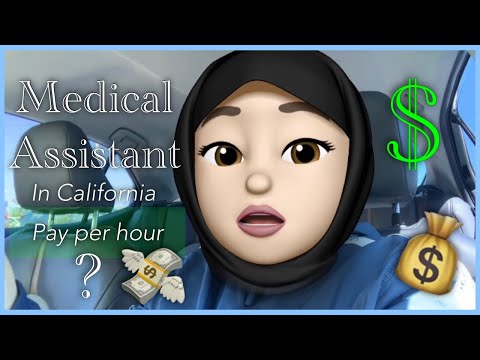Considering a Career in Healthcare? Compare Medical and Dental Assisting
Contents
- Considering a Career in Healthcare?
- Why Choose Medical Assisting?
- What Does a medical assistant Do?
- What Are the Education Requirements for Medical Assisting?
- What Are the Certification Requirements for Medical Assisting?
- What Are the Job Prospects for Medical Assistants?
- What Is the Median Salary for Medical Assistants?
- Why Choose Dental Assisting?
- What Does a Dental Assistant Do?
- What Are the Education and Certification Requirements for Dental Assisting?
Considering a Career in Healthcare? Compare Medical and Dental Assisting is a detailed guide that covers everything you need to know about these two popular healthcare careers.
Checkout this video:
Considering a Career in Healthcare?
The demand for healthcare occupations is expected to grow 18% from 2016 to 2026, according to the U.S. Bureau of Labor Statistics—much faster than the average for all occupations.1 If you’re interested in pursuing a career in the healthcare field, you may be wondering if you should become a medical or dental assistant.
Both roles are integral members of the healthcare team, but they have different responsibilities and require different educational backgrounds and skill sets. Keep reading to learn more about each occupation so you can make an informed decision about which path is right for you.
Medical Assisting
Medical assistants are allied health professionals who perform administrative and clinical tasks in doctor’s offices, hospitals, out-patient clinics and other healthcare facilities. Their duties vary depending on State law, but may include:2
-Answering phones and scheduling appointments
-Maintaining patient medical records
-Preparing patients for examination
-Taking patient vital signs
-Assisting the physician during examinations
-Drawing blood and performing laboratory tests
-Administering medications as directed by a physician
-Educating patients about their conditions and medications
Why Choose Medical Assisting?
There are many reasons to choose a career in medical assisting. Medical Assistants perform a variety of duties in physicians’ offices, clinics, and other healthcare facilities. They are often the first point of contact for patients, so they must be able to multitask and be organized while maintaining a professional and compassionate demeanor.
Medical assistants must be able to keep up with the fast pace of a medical office or clinic. They may be asked to schedule appointments, take patient histories and vital signs, prepare patients for examinations, assist with procedures, and give instruction on care after a procedure or treatment. In some states, they may also be allowed to administer medications and injections.
Dental assistants perform many of the same duties as medical assistants, but in a dental office setting. They may schedule appointments, take patient histories and vital signs, prepare patients for dental procedures, assist with dental procedures, and give instruction on post-operative care. Dental assistants may also be responsible for taking X-rays and maintaining dental records.
Both medical and dental assisting are rewarding career choices that offer opportunities for growth and advancement. If you are considering a career in healthcare, compare medical and dental assisting to find the best fit for your skills and interests.
What Does a medical assistant Do?
If you’re considering a career in healthcare, you might be wondering what medical and dental assistants do. Both roles are important in helping doctors and dentists provide care to patients, but there are some key differences between the two positions.
Medical assistants work in doctors’ offices, hospitals, and other medical facilities. They perform a variety of administrative and clinical tasks to keep the office running smoothly. For example, they may answer phones, schedule appointments, billing and coding insurance forms, and prepare patients for exams. They also take vital signs, collect lab specimens, and give injections.
Dental assistants work in dentists’ offices. Their duties include scheduling appointments, sterilizing instruments, preparing patients for procedures, taking X-rays, and providing postoperative instructions. They may also assist the dentist during procedures such as teeth cleanings, fillings, crowns, and root canals.
Both medical and dental assistants need to be detail-oriented and able to multitask. They must be able to stay calm under pressure and have good communication skills. Most employers require candidates to have at least a high school diploma or equivalent. Some organizations also offer certification programs that can help you get started in your career.
What Are the Education Requirements for Medical Assisting?
If you’re interested in a career in healthcare, you may be wondering whether to become a medical assistant or a dental assistant. Both roles are important in the medical field, but they have different education requirements.
Medical assistants typically need to complete a postsecondary certificate or diploma program, which takes about one year to complete. Some states have certification requirements for medical assistants, and employers may prefer to hire those who are certified.
Dental assistants usually need to complete a vocational program or an associate’s degree, which takes about two years to complete. Dental assistants who want to advance their career may choose to become certified dental hygienists.
What Are the Certification Requirements for Medical Assisting?
The certification requirements for medical assistants vary by state. In some states, medical assistants are not required to be certified. However, most employers prefer to hire medical assistants who have completed a certified medical assistant program and have passed the Certified medical assistant (CMA) exam administered by the American Association of Medical Assistants (AAMA).
There are many ways to become a certified medical assistant. One option is to complete a postsecondary education program that has been accredited by the Commission on Accreditation of Allied Health Education Programs (CAAHEP) or the Accrediting Bureau of Health Education Schools (ABHES). Alternatively, you may choose to complete a non-accredited training program and then pass an examination, such as the CMA exam, to earn your certification.
Another option is to become registered as a medical assistant through your state. Some states have registration programs for medical assistants, but these vary significantly in terms of requirements. For example, some states require that you have completed an accredited training program and passed an examination, while others only require that you have completed a state-approved training program.
To learn more about the certification requirements for medical assistants in your state, contact your state’s Board of Medicine or Board of Nursing.
What Are the Job Prospects for Medical Assistants?
Medical assisting is one of the nation’s fastest-growing occupations, according to the U.S. Bureau of Labor Statistics (BLS). Employment of medical assistants is projected to grow 19% from 2019 to 2029, much faster than the average for all occupations.1 The aging baby-boom generation will need more medical services as they live longer and stay active later in life. As a result, physicians will hire more medical assistants to perform routine administrative and clinical duties, allowing the physicians to see more patients.
The BLS reports that medical assistants held about 727,900 jobs in 2019. Most worked in physician’s offices, hospitals, outpatient care centers, and other healthcare facilities.2
Although most medical assistants have postsecondary education, such as a certificate or diploma from a program that typically lasts about 1 year or an associate degree in medical assisting, some states allow them to work after completing on-the-job training only.
What Is the Median Salary for Medical Assistants?
Medical assistants are Allied health professionals who perform physical and clerical tasks in order to support the work of medical staff such as physicians, nurses and other health professionals. They typically work in outpatient care centers, hospitals, clinics or physician’s offices. In some states, medical assistants may be allowed to perform more advanced tasks such as giving injections or taking X-rays under the supervision of a licensed physician.
The median annual salary for medical assistants was $33,610 in 2016, according to the U.S. Bureau of Labor Statistics (BLS). The top 10% of earners made more than $48,720 while the bottom 10% earned less than $23,280 that year. Salaries vary depending on factors such as geographic location, experience, education and employer type.
Why Choose Dental Assisting?
A career in dental assisting offers many advantages over a career in medical assisting. First, dental assistants are more likely to have opportunities for paid vacation and sick days, health insurance and retirement plans. They also typically work regular office hours and do not have to work overtime or holidays.Second, dental assistants earn a higher average salary than medical assistants. In fact, the average salary for a dental assistant is $36,940 per year, while the average salary for a medical assistant is $30,780 per year.
Third, dental assistants benefit from having a more defined career path than medical assistants. While both roles may involve some patient interaction and basic administrative duties, dental assistants are primarily responsible for tasks related to dental care, such as chairside assistance, sterilization of instruments, and taking X-rays. This specialization allows dental assistants to develop a deeper knowledge of dentistry and to become experts in their field.
Finally, due to the nature of their work, dental assistants enjoy a high level of job satisfaction. They frequently report feeling proud of their work and knowing that they are helping people improve their oral health. If you are considering a career in healthcare but are not sure which route to take, compare the advantages of each field carefully before making your decision.
What Does a Dental Assistant Do?
A dental assistant is a vital member of the dental health team. Dental assistants work closely with dentists, providing support that helps ensure efficient and high-quality patient care.
The duties of a dental assistant are varied and may include any or all of the following:
-Preparing patients for dental procedures
-Taking and developing X-rays
-Assisting with dental procedures
-Properly disinfecting and sterilizing dental instruments
-Maintaining accurate patient records
-Providing patient education on proper oral hygiene techniques
Dental assistants must be detail oriented and have excellent communication skills. They must be able to work well under pressure and remain calm in potentially stressful situations. Most dental assistants have completed a training program at a community college, trade school, or technical school. Some states require certification or licensure for dental assistants, although this is not always necessary.
What Are the Education and Certification Requirements for Dental Assisting?
Dental assistants must complete an accredited dental assisting program and pass a written examination and skills assessment administered by the Dental Assisting National Board (DANB). In addition, most states regulate dental assisting, and requirements vary by state. State requirements may include completion of an approved dental assistant program and passing a state-specific examination. For states that do not have specific regulations for dental assistants, DANB’s Certified Dental Assistant (CDA) credential may be used to meet job non-clinical dental assisting job requirements.
Health Careers Explorer tool to learn more about training programs near you.







